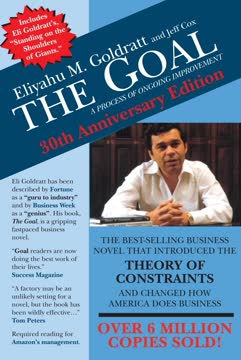Key Takeaways
1. Project management challenges: Delays, overruns, and scope compromises
"Almost no project finishes on time, or budget. And if they do, it's because the original scope has been compromised."
Root causes of project failures. Traditional project management often fails due to three primary factors:
- Excessive safety time built into individual task estimates
- Student syndrome: delaying work until the last minute
- Parkinson's Law: work expanding to fill the time allotted
Consequences of poor project management:
- Missed deadlines and market opportunities
- Budget overruns and reduced profitability
- Compromised product quality or features
- Decreased customer satisfaction and loyalty
2. The Critical Chain: Redefining project constraints and priorities
"The critical chain is the longest chain of dependent steps, the longest in time."
Shifting focus from critical path to critical chain. The critical chain approach considers both task dependencies and resource constraints, providing a more realistic project timeline:
- Identifies the true project bottleneck
- Accounts for resource contentions across multiple projects
- Prioritizes tasks that directly impact project completion
Implementing the critical chain method:
- Remove hidden safety from individual task estimates
- Aggregate safety time into project and feeding buffers
- Focus on managing buffers rather than individual task deadlines
3. Buffer management: Protecting project timelines effectively
"We put all the safety at the end of the critical path. Stripping the time estimates of each step frees up sufficient time to create a 'project buffer.'"
Types of buffers in critical chain project management:
- Project buffer: Protects the overall project completion date
- Feeding buffer: Safeguards the critical chain from delays in non-critical paths
- Resource buffer: Ensures critical resources are available when needed
Effective buffer management strategies:
- Monitor buffer consumption rates
- Prioritize tasks based on buffer penetration
- Take corrective action when buffers are significantly consumed
4. Multi-tasking: The hidden productivity killer in project execution
"Multi-tasking is probably the biggest killer of lead time."
Negative impacts of multi-tasking:
- Increased setup and context-switching time
- Reduced focus and quality of work
- Extended project lead times
Strategies to reduce multi-tasking:
- Prioritize tasks based on the critical chain
- Implement a "work-in-process" limit for individuals and teams
- Encourage task completion before starting new work
5. Vendor negotiations: Balancing lead time and cost considerations
"We must understand the financial impact of a delay. We must understand that a three months' delay sometimes costs us more than giving another ten percent to all our vendors."
Rethinking vendor relationships:
- Focus on total project impact rather than individual component costs
- Negotiate for shorter lead times, even at higher prices
- Implement early notification systems for potential delays
Strategies for effective vendor management:
- Clearly communicate project priorities and timelines
- Offer incentives for early delivery or penalties for delays
- Build long-term partnerships based on reliability and responsiveness
6. Organizational constraints: Identifying and addressing bottlenecks
"The bottleneck is a resource with capacity that is not sufficient to produce the quantities that the market demands. In this way the bottleneck prevents the company from making more money."
Identifying organizational constraints:
- Analyze resource utilization across projects
- Look for consistently delayed or overloaded departments
- Examine customer complaints and missed opportunities
Addressing bottlenecks:
- Increase capacity at the constraint
- Offload non-essential work from the bottleneck
- Implement buffer management to protect the constraint
7. Academic-industry divide: Bridging theory and practical application
"We have made a lot of assumptions. And in order to make it work, our program must be special. If we continue to do what we have done, which is what everybody else is doing, we will continue to get the same unsatisfactory results."
Challenges in academic project management education:
- Theoretical models often fail to address real-world complexities
- Focus on optimization techniques rather than practical methodologies
- Lack of emphasis on soft skills and leadership in project execution
Improving project management education:
- Incorporate case studies and real-world projects
- Emphasize critical thinking and problem-solving skills
- Foster collaboration between academia and industry
8. Continuous improvement: Adapting project management methodologies
"There must be a way to rectify it. We must."
Importance of continuous improvement:
- Regularly evaluate project management practices
- Encourage feedback from team members and stakeholders
- Stay informed about new methodologies and tools
Implementing a culture of continuous improvement:
- Conduct post-project reviews and lessons learned sessions
- Experiment with new techniques on smaller projects
- Foster a learning environment that values innovation and adaptation
9. Resource allocation: Optimizing for project success
"Dependencies between steps can be a result of a path or a result of a common resource. Why are we so surprised that both dependencies are involved in determining the longest chain of dependent steps?"
Effective resource allocation strategies:
- Consider both task dependencies and resource constraints
- Prioritize resources based on the critical chain
- Implement resource buffers to ensure availability
Challenges in resource management:
- Balancing resource utilization across multiple projects
- Addressing skill gaps and training needs
- Managing resource conflicts and priorities
10. Leadership in project management: Focusing on the critical chain
"Focusing is important, but there are many other things that are just as important."
Key leadership skills for project managers:
- Ability to identify and communicate project priorities
- Skill in managing stakeholder expectations
- Capacity to make decisions based on buffer management data
Fostering a critical chain culture:
- Educate team members on critical chain principles
- Encourage open communication about task progress and potential delays
- Celebrate successes in buffer management and project delivery
Last updated:
FAQ
What's Critical Chain by Eliyahu M. Goldratt about?
- Focus on Project Management: The book applies the Theory of Constraints (TOC) to project management, emphasizing effective management of timelines and resources to prevent delays and cost overruns.
- Narrative Style: It uses a fictional narrative to present complex concepts, making them more relatable and easier to understand through storytelling.
- Key Concepts: Introduces the critical chain method, which prioritizes resource allocation and scheduling, and discusses the impact of safety time on project efficiency.
Why should I read Critical Chain by Eliyahu M. Goldratt?
- Practical Insights: Offers valuable insights into improving project management practices, challenging conventional wisdom and encouraging a new approach.
- Real-World Applications: Concepts are applicable to real-world scenarios, helping implement TOC in organizations for better project delivery.
- Engaging Learning Experience: Combines storytelling with educational content, making it an enjoyable and informative read.
What are the key takeaways of Critical Chain by Eliyahu M. Goldratt?
- Importance of Focus: Emphasizes focusing on the critical path and managing constraints to ensure projects are completed on time and within budget.
- Safety Time Management: Highlights the need to manage safety time wisely to avoid inefficiencies and streamline project timelines.
- Collaboration and Communication: Stresses the importance of effective communication and collaboration among team members for project success.
What is the Theory of Constraints (TOC) in Critical Chain by Eliyahu M. Goldratt?
- Core Principle: TOC focuses on identifying and managing constraints that limit an organization's performance, aiming for overall efficiency improvement.
- Five Focusing Steps: Involves identifying, exploiting, subordinating, elevating the constraint, and repeating the process for continuous improvement.
- Application in Projects: Helps teams prioritize tasks and allocate resources effectively to meet deadlines and achieve project goals.
How does Critical Chain by Eliyahu M. Goldratt differ from traditional project management methods?
- Focus on Constraints: Shifts focus from detailed planning to managing constraints and resource allocation for efficient project execution.
- Dynamic Scheduling: Advocates for flexible scheduling that adapts to changes and uncertainties, unlike rigid traditional plans.
- Reduced Safety Time: Encourages minimizing excessive safety time to create more accurate project timelines and reduce inefficiencies.
What is the critical chain method introduced in Critical Chain by Eliyahu M. Goldratt?
- Resource Allocation Focus: Prioritizes resource allocation and scheduling based on project constraints to optimize resource use and minimize delays.
- Buffer Management: Incorporates strategic time buffers to protect the project schedule from uncertainties, ensuring critical tasks are completed on time.
- Emphasis on Collaboration: Encourages team collaboration to address constraints and improve project outcomes through a team-oriented approach.
How does Critical Chain by Eliyahu M. Goldratt address the issue of project delays?
- Identifying Constraints: Emphasizes identifying and managing constraints that lead to delays, developing strategies to mitigate their impact.
- Dynamic Adjustments: Advocates for real-time adjustments to project plans based on feedback, allowing teams to respond to challenges effectively.
- Continuous Improvement: Promotes learning from past experiences to refine processes and reduce future delays.
What role does safety time play in Critical Chain by Eliyahu M. Goldratt?
- Excessive Padding: Warns against excessive safety time padding, which can lead to inefficiencies, and encourages critical assessment of its necessity.
- Impact on Timelines: Proper management of safety time can significantly impact project timelines, leading to more accurate schedules.
- Balancing Act: Highlights the need for a balance between safety time and realistic estimates to maintain project momentum and timely delivery.
How can I apply the concepts from Critical Chain by Eliyahu M. Goldratt in my organization?
- Assess Current Practices: Evaluate current project management practices to identify areas for improvement and constraints hindering performance.
- Implement TOC Principles: Focus on identifying and managing constraints using TOC's five focusing steps to guide improvement efforts.
- Encourage Collaboration: Foster a culture of collaboration and open communication to address challenges and improve project outcomes.
What are the implications of Critical Chain by Eliyahu M. Goldratt for future project management practices?
- Shift in Mindset: Encourages a shift from traditional practices to a dynamic, constraint-focused approach for more efficient execution.
- Integration of TOC: As TOC principles are adopted, project management practices will evolve, enhancing overall performance and success rates.
- Focus on Continuous Improvement: Emphasizes learning from past experiences, equipping organizations to navigate challenges and achieve goals.
What are the best quotes from Critical Chain by Eliyahu M. Goldratt and what do they mean?
- "The question is not ‘are we going to miss?' The question is ‘when are we going to miss?'": Highlights the inevitability of challenges and the need to address constraints proactively.
- "If we don't launch the new modem, our competitors will.": Emphasizes the urgency of timely product development to maintain market competitiveness.
- "Your mission is to find a way that will enable us to drastically cut our development time.": Underscores the book's central theme of efficiency and speed in project management.
How does Critical Chain by Eliyahu M. Goldratt address resource contention?
- Identifying Resource Contention: Stresses the importance of identifying resource contention as a key factor in project delays.
- Scheduling Adjustments: Suggests rescheduling tasks or reallocating resources to prevent conflicts and ensure smooth project progression.
- Using Buffers: Advocates for strategic buffer placement to absorb the impact of resource contention and keep projects on track.
Review Summary
Critical Chain is a business novel that applies Theory of Constraints to project management. Readers appreciate Goldratt's storytelling approach, making complex concepts accessible. The book introduces critical chain project management, focusing on identifying and managing constraints, using buffers, and avoiding common pitfalls like the "student syndrome." While some find the personal storylines weak, many praise the book's insights on improving project delivery. However, some readers note that project management has evolved since its 1997 publication, potentially limiting its relevance to modern practices.
Similar Books

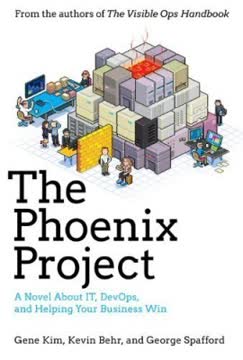

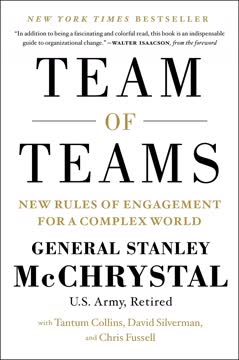

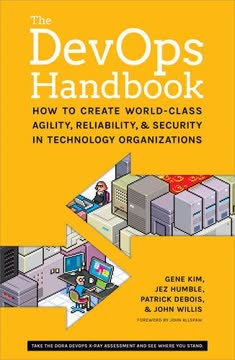
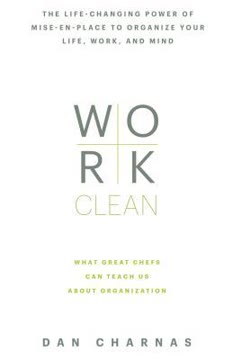
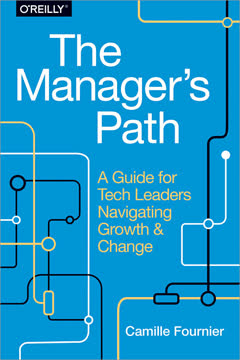

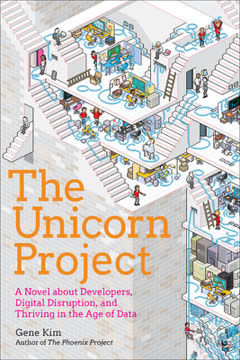
Download PDF
Download EPUB
.epub digital book format is ideal for reading ebooks on phones, tablets, and e-readers.

